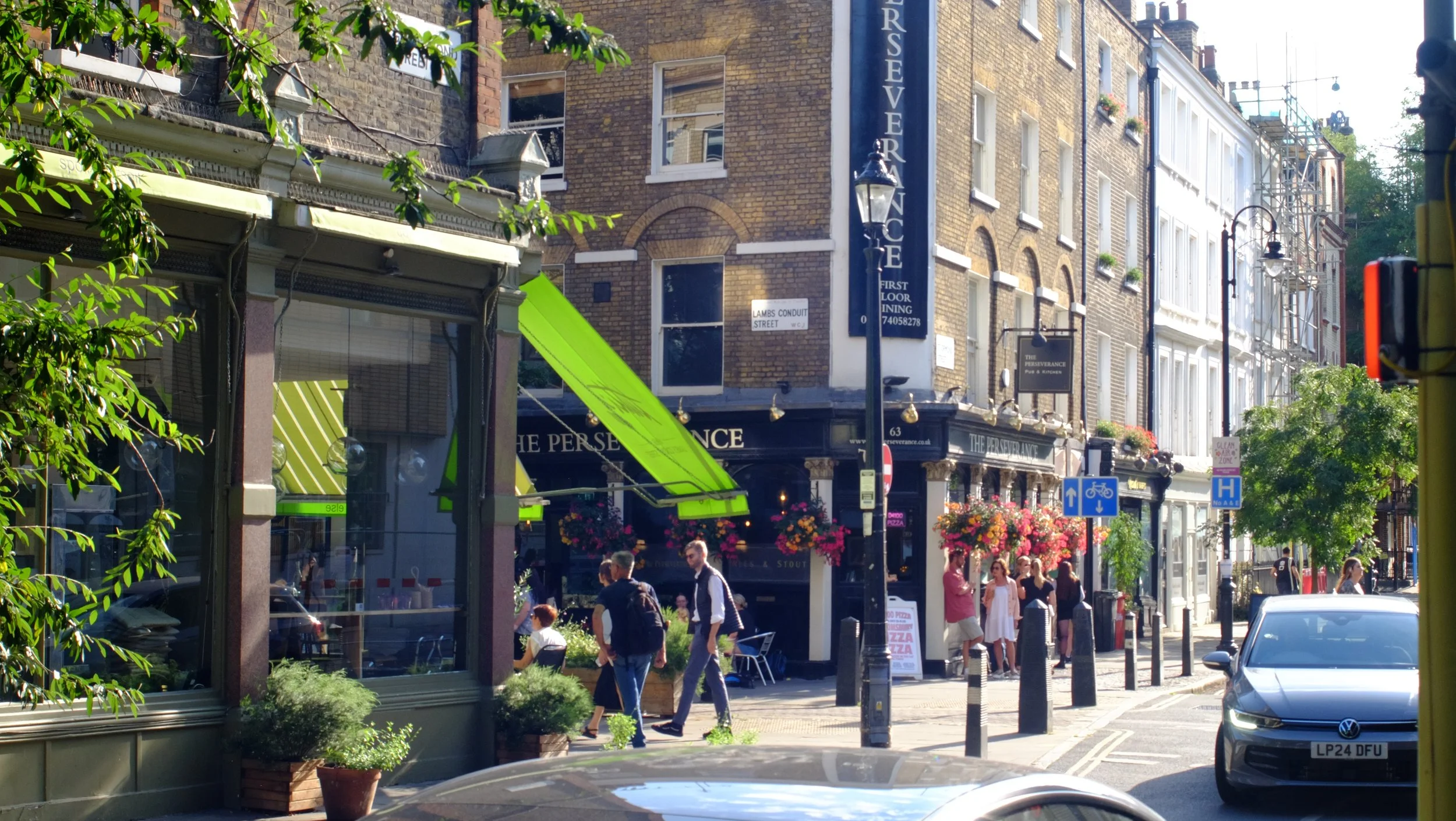Holborn Liveable Neighbourhood
Heat Resilience Study
Designing public spaces for extreme heat
Holborn public realm heat map © Shade the UK
About the study
Shade the UK and Love Design Studio have completed the Holborn Liveable Neighbourhood (HLN) Heat Resilience Study, an innovative research project commissioned by Camden Council. The study analyses the growing risks of hotter weather for Holborn’s public realm, and identifies a suite of targeted adaptation measures that can help to address them.
Holborn’s public realm currently offers limited protection from extreme heat, with minimal shading and few spaces that provide relief from high temperatures. This means many streets and public areas are uncomfortable and potentially unsafe during hot weather, particularly for vulnerable people.
This study forms part of the wider Holborn Liveable Neighbourhood (HLN) project, a transformative street and public realm programme in the heart of London. HLN aims to promote healthier lifestyles, encourage active and sustainable travel, and improve safety, air quality and climate resilience in the area. These outcomes can be realised to their full potential in areas where overheating risks have been identified and mitigated.
What is the climate risk?
Overheating in the UK
As UK summers get hotter, overheating of cities, buildings and public spaces is evolving into a serious public health issue due to a range of factors. These include existing environmental and economic inequity factors, and a lack of awareness or preparedness for hot weather The record-breaking temperature of 40.3°C in England during the summer of 2022 marked a shift in public awareness and highlighted the urgent need for new policies and interventions to create cooler, more resilient cities.
Protecting the most vulnerable
Extreme heat doesn’t impact everyone equally. Those most at risk include; low-income households, young children, older adults, people with existing health conditions, people experiencing homelessness and outdoor workers. While not usually considered as vulnerable groups of people, generally healthy tourists and students can become vulnerable to heat if exposed to it for long periods. To create safer and more equitable public spaces, heat adaptation and resilience strategies should focus on addressing the needs of these vulnerable groups of people as a priority, which will contribute to reducing exposure to heat for everyone.
Holborn public realm © Shade the UK
Hierarchy of thermal comfort for external public spaces
© Shade the UK
Outputs from the study
The study identifies targeted areas within Holborn which would benefit most from heat adaptation measures. The analysis of these areas and the measures to increase thermal comfort and heat resilience in the public realm, align with the five HLN project outcomes: Safe, Efficient, Green, Active, and Connected.
The main outputs include:
A detailed map of heat exposure, informed by microclimate modelling and analysis across the HLN area, and a longlist of the most exposed areas or “hot spots”.
A vulnerability assessment for the HLN area as a whole, and the specific areas surrounding the hot spots.
Recommended heat adaptation measures for three priority hot spots (based on overall heat risk and the hot spot specific vulnerability assessment), with an indication of the potential cooling benefits and wider benefits of these measures.
An overarching Heat Resilience Strategy for the HLN area, including a high-level Shade and Cooling Masterplan, and a hierarchy of Thermal Comfort Design Principles for Holborn’s public realm.
The Heat Resilience Study has been developed to ensure HLN proposals respond to, and are resilient to, the impacts of heat - now and in the future. While focused on the specific context of Holborn — including the limited green space, low tree canopy cover, and unique built environment— the study also explores how these strategies could be adapted for other neighbourhoods in London.
As climate change accelerates, this study serves as an important contribution to how we respond to it at the neighbourhood-scale in a practical way. Whilst the study has focused on the specific context of Holborn in the London Borough of Camden, it has transferability and replicability for other London Boroughs and could act as a roadmap for designing cooler, healthier and safer public spaces for everyone in London, and for protecting people, communities and neighbourhoods from the impacts of extreme heat.
If you are interested to learn more about the work that Shade the UK do with our sister company Love Design Studio, would like to collaborate with us, or commission our services, please visit the Love Design Studio website.









